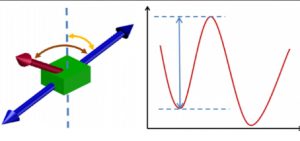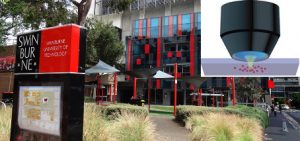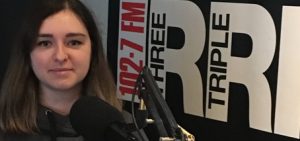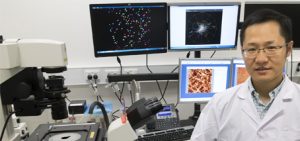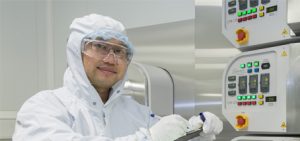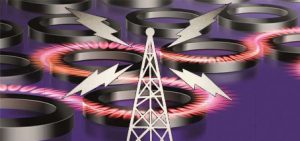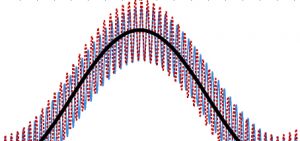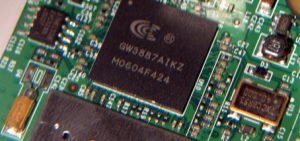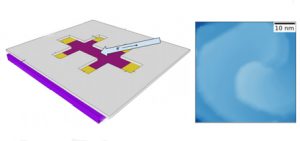FLEET News
The unusual electronic and magnetic properties of van der Waals (vdW) materials, made up of many ‘stacked’ 2D layers, offer potential for future electronics, including spintronics. In a recent study, FLEET researchers at RMIT found that one promising candidate material, Fe3GeTe2 (FGT), fits the bill – provided it’s created in layers only 200 millionths of a millimetre in thickness. This …
Bridge between microscopic and macroscopic behaviour A new quantum-gas microscope facility at Swinburne University of Technology will allow studies of ultra-cold atomic gases, giving researchers the ability to image and manipulate single atoms. The facility will allow study of quantum effects at a macroscopic scale: a major unsolved issue in physics. To harness the full potential of such quantum materials, …
FLEET PhD student Rebecca Orrell-Trigg (RMIT) uses liquid metals to synthesise 2D (atomically thin) materials for use in future ultra-low energy electronic devices. Late last year they developed a liquid metal “bubbling” method that was described as “ground breaking”, and have since refined this method to make it even more widely applicable. Rebecca’s interview covered the advantages of the new …
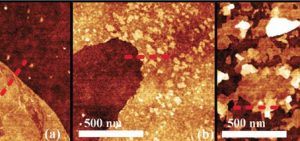
Last year, FLEET researchers at RMIT developed a ground-breaking new method of depositing atomically-thin (two-dimensional) crystals using molten metals, described as a ‘once-in-a-decade’ advance. Earlier this year, the same research team expanded the new method from controlled to ambient conditions, and has properly characterised the growth mechanisms for key tin oxides, which should allow improved control of target oxide growth. …
Melbourne Knowledge Week (May 2018) was an opportunity for FLEET to engage with the public and road-test a number of outreach demonstrations being developed for schools. It also gave 20 Centre members the opportunity to gain valuable experience in public science outreach, speaking to a diverse audience. Melbourne Knowledge Week showcases cool science and engineering projects in the city of …
An MP visit last week provided an opportunity to discuss future electronics, 2D materials and science policy. Melbourne MP and Greens Science/Energy spokesperson Adam Bandt was visiting FLEET’s labs at RMIT, hosted by FLEET RMIT node leader Kourosh Kalantar-Zadeh, and FLEET Director Michael Fuhrer. As well as FLEET researchers, Adam also got to meet our scientific counterparts from the Centre for …
FLEET-nano collaboration recognised: Congratulations to Qiaoliang Bao, 2018 ANFF-VIC Technology Fellow Qiaoliang Bao works at the nanoscale, trapping photons in atomically-thin, two-dimensional materials, where high binding energies create a quantum state known as a superfluid. The aim is a new generation of superfluid transistors that will ‘switch’ using much less energy than conventional electronics. Such work requires access to the …
“Endless” possibilities for custom nanotech design FLEET’s research to achieve zero-dissipation electrical current depends on the design of key nanoscale structures. Within FLEET, nano-device fabrication is coordinated via Enabling technology B, which links each of the research themes. In 2017, Theme B leader Lan Wang, and PhD student Cheng Tan, developed a method to build such nanoscale structures, required to achieve zero-dissipation …
“It’s so simple my retired parents could do this in their kitchen.” FLEET AI Torben Daeneke discussed deceptively-simple methods of depositing atomically-thin materials with Rohan Neagle, on Radio Adelaide’s Subatomic radio show. Torben’s interview also covered why 2D materials are key to ultra-low energy electronics, the mechanics of 2D deposition, the end of Moore’s Law and the massive amount of …
Recent theoretical studies at Monash University bring us a step closer to realistic ‘quantum batteries’. Such technology would depend on the energy difference offered by different quantum states, rather than on electrochemical changes, as is the case in traditional batteries. Quantum batteries also offer potential for vastly better thermodynamic efficiency, and ultra-fast charging time. The study, which was co-led by …
Wait. What do you mean ‘transistors’? Yep, ‘transistors’ are still the basis of electronics. In essence, they’re the tiny controllable switches that form the building blocks of logic circuits, switching between open (0) and closed (1). In your Dad’s old ‘wireless’ radio, transistors were the small metallic components shaped like War of the Worlds war tripods. Those replaced the glass …
Applying an electric field switches conduction mode of a topological material FLEET researchers achieved a significant landmark in the search for a functional topological transistor in 2017, using an applied electric field to switch the electronic conduction mode of a topological material. A ‘gate’ electrode was used to switch the conduction mode in the topological material Na3Bi. Na3Bi is a …
Congratulations to FLEET UNSW postdoc Harley Scammell who has been awarded a Fulbright Scholarship to work with world-renowned theoretical physicist Subir Sachdev at Harvard University on the mechanisms behind superconductivity – an exotic quantum phase of matter. The Australian-American Fulbright Commission promotes education and cultural exchange between Australia and the US, By the completion of the Fulbright program, researchers around …
Some terms and materials relevant to FLEET. The first sentence or two of each definition is aimed at non-physicists. For physicists in the field, these are suggested as accurate, non-jargon simplifications to help communicate your science. More information for experts is given in italics for some terms, as well as useful links. Feedback and suggested tweaks/additions are very welcome! 2D Two-dimensional materials …
FLEET researchers taking an innovative, even ‘playful’, approach to their science have created a couple of unique and interesting branding displays for the Centre. >>>FLEET PhD student Fan Ji developed this micro-sized logo (right) at UNSW. The FLEET logo is etched onto the two-dimensional interface between two materials, in letters only a few thousandths of a millimetre high, using bias-assisted …

